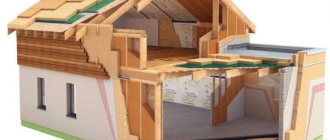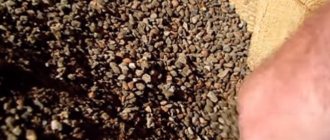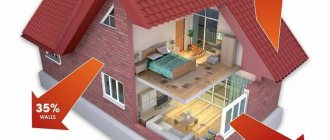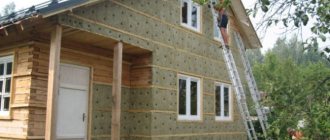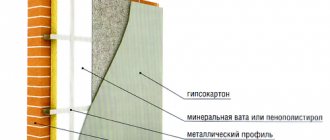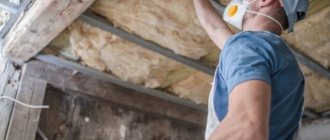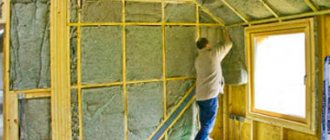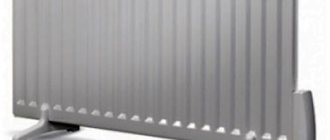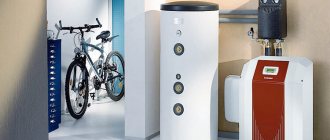The use of thermal insulation systems in building structures can significantly reduce heating costs. The use of all kinds of insulation makes it possible to speed up the pace of construction and reduce the budget for building a house. In order for them to cope with their responsibilities, you need to know how to choose them. Do you agree?
We will tell you how to choose the right insulation for the exterior walls of your home. The article we presented describes all types of thermal insulation materials used in practice and their operating features. Independent owners of country estates will find facade insulation technology here.
The feasibility of external wall insulation
Heat loss through walls averages about 40%, depending on the integrity of the structure and the thickness of the wall. With rising prices for gas and electricity, it becomes unacceptable to spend money on heating the street.
Therefore, it is necessary to insulate the walls from the outside, which provides the following advantages:
- thermal insulation of the house from the outside does not take away the useful area of the living space indoors;
- there is no load on the walls and foundation;
- the insulation layer performs decorative and protective functions for the walls, extending their service life;
- walls insulated from the outside do not freeze and are not saturated with moisture from steam, as with internal insulation;
- Thermal insulation materials also perform a soundproofing function.
But the main reason for insulating the facade of a house is still economic, because this simple procedure can almost halve the amount in receipts for heating.
To correctly select a material designed to reduce heat loss, a thermal engineering calculation is needed. Our recommended article will introduce you to its examples and formulas.
Common mistakes in the process of building a porch to a house
There are several mistakes that are made most often at work. Let's get to know them.
- Mistake #1. The construction of the porch is carried out after the construction of the house itself is completed. In such cases, the depth of the foundation is not significant; moreover, it is not associated with the foundation of the house. Consequently, the foundation is affected by groundwater, soil heaving, as well as a number of other factors that lead to cracks appearing between the porch and the house.
- Mistake #2. Wooden support pillars, which are used in the case of a wooden porch, are not treated with antiseptic preparations. The result of such an error is obvious - after some time the structure has to be rebuilt.
- Mistake #3. The height of the platform is the same as the height of the entrance to the house. In winter, when the soil rises, the height of the porch increases, which can cause the front door to jam.
- Mistake #4. There is no vapor barrier or it is of poor quality. As a result, moisture will seep through the structure and reach the cladding, which does not allow steam to pass through. Next, this steam will turn into water and simply remain under this material. With the onset of cold weather, moisture will begin to expand, which will lead to failure of the finish.
Types of insulation materials
So what is the best way to insulate a house from the outside to reduce heat loss? Manufacturers offer many materials suitable for these purposes. But there are several main types. These include: polystyrene foam, basalt wool, glass wool, extruded polystyrene foam, mineral wool and others.
A less effective method of insulation is to apply a layer of plaster to the outer part of the walls. This is an inexpensive way to reduce heat loss, but it requires experience and certain skills - just desire will not be enough.
External wall insulation requires certain professional skills from the performer. They will be useful both when choosing a material and during its installation.
Wooden houses are often insulated using a double frame. In this case, any of the listed materials is attached to the walls, and cladding is done on top. At the same time, an air “cushion” remains between the insulation and the decorative layers for air ventilation.
Option No. 1 - polystyrene foam
Expanded polystyrene has gained the greatest popularity among thermal insulation materials. First of all, this is due to its low cost. A distinctive feature of the insulation is also its low weight.
Other advantages of the material:
- low thermal conductivity;
- affordable price;
- long service life.
One of the disadvantages is that foam does not allow steam to pass through. This feature does not allow it to be used for insulating wooden houses.
Among other disadvantages, the most significant is that polystyrene foam is a flammable material that emits substances harmful to humans during combustion. In addition, the fragility of the material, which leads to damage to the insulation even with minor mechanical stress, significantly complicates its installation.
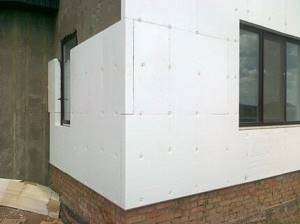
Foam insulation is an excellent way to reduce heat loss, both in a private home, an apartment or an industrial enterprise, and for quite little money.
Option No. 2 – mineral wool
This material also enjoys well-deserved popularity among owners of residential and non-residential premises.
Advantages of mineral wool:
- high vapor permeability, which prevents wooden structures from rotting, and bricks are not saturated with moisture, which prevents the appearance of mold and fungi on the surface of the walls;
- low cost;
- light weight of the mats, which makes it easier to work with them and reduces transportation costs;
- the material is not flammable, there are no toxic odors;
- long service life.
There are three types of mineral wool: slag wool, glass wool and stone wool (also known as basalt). Each material has its own characteristics.
Basalt wool is considered the most suitable for residential buildings, since it is made from safe raw materials, unlike glass wool. At the same time, the material is stronger and more durable than slag wool. But the high cost of basalt wool is its disadvantage.
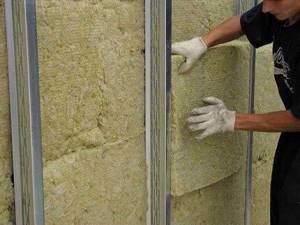
Mineral wool, made in the form of mats, is the most practical option for insulating low walls and small rooms. And anyone who has at least a little knowledge of construction can handle its installation.
Modern glass wool is considered safe to use. Unlike the material of the same name, manufactured ten years ago, it does not irritate the respiratory tract. It can be used to insulate not only external, but also internal walls and ceilings.
It is easy to install and lightweight. Can be purchased in rolls or slabs. It is more advisable to buy rolled material for insulating long walls. Glass wool slabs are suitable for small walls.
The following advantages of the material are highlighted:
- does not absorb moisture from the air;
- no toxic odors;
- does not ignite;
- does not change shape during use;
- high vapor permeability rates;
- good sound insulation properties;
- does not interact with chemicals;
- can be used in all climatic zones of the planet.
In some cases, rolled glass wool will cost less than that made in the form of slabs. To cut it, you can use ordinary sharpened knives.
The material does not have many disadvantages. Among them:
- when insulating walls with glass wool, you need to wear protective gloves and goggles;
- the fragility of the fibers of the material, which is why a lot of synthetic substances are in the air during installation and interfere with safe breathing.
Despite the fact that modern insulation material is an order of magnitude more environmentally friendly and safer for humans, if there is a significant amount of polymer particles in the air, it is better to use a respirator.
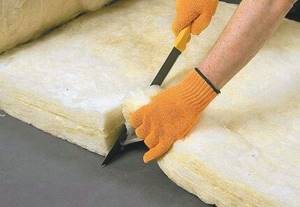
In some cases, rolled glass wool will cost less than that made in the form of slabs. To cut it, you can use regular sharpened knives.
Option No. 3 – extruded polystyrene foam
This material is made from ordinary polystyrene foam.
After special processing, it receives the following benefits:
- increased compressive strength;
- low moisture absorption;
- low flammability or its complete impossibility, which depends on the amount of fire retardant substance;
- reduced thermal conductivity.
For such material you will need to pay a higher price than for regular foam. But extruded polystyrene foam is more durable and reliable.
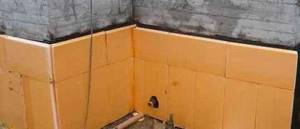
Extruded polystyrene foam is more resistant to loads, so many experts recommend insulating the foundation along with the walls.
Another disadvantage is the smooth surface of the material slab. Because of this, solutions do not “set” with it, therefore, without preliminary preparation of the surface, such foam cannot be used in a “wet facade” design.
You will need to sand the smooth side with fine sandpaper to give it a rough surface. Additionally, you can apply a layer of adhesive primer, which will increase the penetration of the solution into the insulating material.
Option No. 4 - bulk insulation
Bulk materials can also be used for external thermal insulation.
Among them, the most popular are:
- vermiculite;
- perlite crushed stone;
- expanded clay
Vermiculite can be used not only to insulate walls outside the room, but also from the inside. It is used to insulate sewer and water pipes, floors, attics, and foundations. It can be produced in the form of slabs. There are technologies by which this material is added to concrete or mortars.
Vermiculite is a natural material that does not emit harmful toxic odors. Its advantages are: durability, lightness, fire resistance, low thermal conductivity and sound absorption. It also does not absorb moisture.
To insulate the outer wall, bulk material can be added to the mortar or poured between the main wall and the decorative one, built on a foundation made of facing bricks. This method is more expensive, as it requires expanding the foundation. An additional load on the foundation slab is also expected.
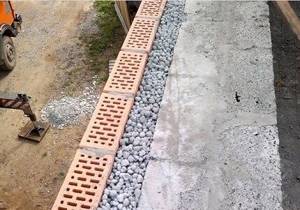
It is better to think about this method of insulation in advance, even at the stage of design or construction of the building, so that there is no interference in the form of the roof
Vermiculite is sold in paper bags, usually 25 kg. This is very convenient during transportation, because for delivery you can use your own passenger transport.
Perlite , depending on the fractions, can be of different sizes. It is also used to insulate roofs and floors. It is a volcanic glass-like rock that has no odor. Widely used not only in construction, but also in metallurgy and agriculture.
Advantages of the material:
- porous structure;
- low cost;
- easily absorbs and releases moisture without losing its qualities;
- fire resistance;
- low thermal conductivity.
A perlite layer of just 3 cm has the same thermal insulation efficiency as brickwork 25 cm wide.
Expanded clay is a granular porous material produced artificially. When several components are burned (peat, intumescent clay, diesel oil, sawdust, sulfate-alcohol stillage), fusible raw materials are obtained. It is foamed and heat treated to give it its final shape.

To save on purchasing expanded clay, you need to buy it from the manufacturer. Of course, this is not always convenient, but there is a guarantee that the material is really high quality
The material is sold in fractions from 2 mm to 40 mm. Expanded clay from 10 mm to 20 mm is considered the most popular. They are the ones who need to fill the space between the walls – the main and decorative ones.
A layer of only 100 mm replaces 1000 mm of brickwork in terms of thermal conductivity. In frosty weather, insulation will prevent the house from losing a lot of heat, and in the summer heat it will keep the room cool due to its extremely low thermal conductivity.
Advantages of wall insulation with expanded clay:
- this is one of the cheapest insulation materials;
- reduction in heat loss reaches 75%;
- can be used at any outside temperature and humidity;
- long service life;
- there is no burning or rotting of the material;
- expanded clay does not attract insects and rodents;
- You can insulate a house yourself, as it does not require high technical skills or special tools.
Expanded clay can be poured into the layer between the decorative and load-bearing walls in its pure form, or mixed with cement. The proportion is 1:10 - one part cement and ten parts expanded clay. You will need a concrete mixer and water to dissolve the cement. The prepared mixture is poured into the empty space between the walls.
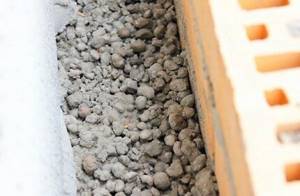
This is what a cement mixture with expanded clay looks like, which can be poured as insulation between two walls. Of course, insulation with cement mixture is a rather lengthy process, but it’s worth it
You can also do it differently: first pour expanded clay to a height of 300 mm, and then saturate it with the prepared cement “milk”. Then add insulation again. And repeat this until the height of the insulation reaches the desired level.
Any of the methods will not worsen the thermal insulation properties of the material.
Extruded polystyrene foam
Extrusion is a synthetic insulation material. It is based on a unique technology developed in the USA. The quality of the insulation is so high that many of the best construction companies give it preference in all areas of construction.
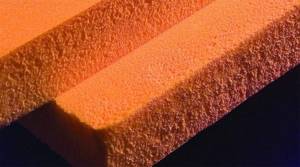
Advantages of extruded polystyrene foam:
- Thermal conductivity is extremely low.
- Vapor permeability is insignificant. In comparison, a 20 mm slab has the same level of vapor permeability as 1 layer of roofing felt.
- Resistant to mechanical deforming influences.
- It tolerates a wide temperature range from -50 to +75°C.
- The material is durable, service life is 30 years or more.
- Completely environmentally friendly, does not emit harmful substances during operation.
- When wet, it does not lose its quality characteristics, which is very important in roof insulation.
- Installation is as simple as possible.
There are practically no disadvantages with external and internal insulation. The main factor is flammability, but this can be eliminated by adding fire retardants to the composition, although such boards are somewhat more expensive. In this case, it will only smolder, but the release of harmful substances is still dangerous to health.
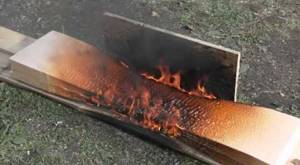
Facade insulation technologies
There are three main technologies for facade insulation:
- “well” method - construction of a multi-layer wall;
- “wet” method - under the plaster coating;
- “dry” method - “ventilated facade” technology.
Depending on the chosen insulation method, you should select thermal insulation materials suitable for implementation.
The “wet” method involves applying a finishing coating to a layer of insulation in the form of a plaster mixture. Since the mixture is rich in moisture, it is necessary to use only materials that do not absorb water. Polystyrene foam is best suited for this, but mineral wool can also be used.
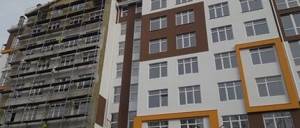
A significant part of the living space is insulated using the wet method. Its versatility and ease of execution allows it to be used even for insulation of high-rise buildings
Depending on the strength of the wall and the integrity of the brickwork, the plaster system can be “light” or “heavy”. In the first case, the main goal is to reduce the weight of the thermal insulation layer.
The insulation is fixed to the wall with glue and dowels. From the outside it is protected by a metal profile made of thin aluminum. Only a thin decorative layer of plaster is applied to it to level the surface of the wall and give it a finished visual appearance.
In a “heavy” system, the insulation is fixed with metal anchors and pressed down with reinforcing mesh. A 5-5.5 cm layer of plaster is applied on top. This design is reliably protected from temperature changes and moisture.
With the “dry” method of insulation, plaster is not used at all. The insulation is fixed to the wall with glue and mounting umbrellas. In this case, Penoplex is ideal, for which telescopic fasteners with wide caps and other mounting elements are specially produced.
On the outside, the insulation is protected by a membrane layer, the main task of which is to provide protection from atmospheric water. The membrane is fixed with spaced metal or wooden slats, forming a ventilation gap between the thermal insulation and the sheathing.
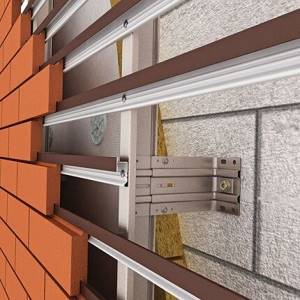
This method requires the performer to have not only knowledge about the materials used, but also experience in using hand tools
The gap width is up to 5 cm. The cladding layer can be made of various panels: wood, steel. It can also be half-brick masonry, tiles or siding. This method of insulation is more durable, unlike the “wet” one, and can reach a service life of half a century.
Using multilayer technology, the surface is insulated with two more layers: insulation and an outer wall made of brick.
This method of insulation was described above. Various bulk materials that are resistant to steam, condensation and moisture (expanded clay, perlite, etc.) are suitable for it.
How to insulate
For external insulation, several options are used:
- A system of three layers inside the masonry. Insulation is installed during the construction of walls.
- Ventilated facade. The insulation is placed inside the frame and lined with decorative and protective material.
- “Wet” façade. The insulation boards are attached to the wall, covered with reinforcing fiberglass mesh and plastered.
Scheme
The sequence of application and installation of thermal insulation and cladding depends on the selected material and type - ventilated facade, “wet” or three-layer.
Tools
To perform façade work efficiently, you will need a set of tools:
- Square.
- Levels of different lengths. Optimally – 60 – 80 cm.
- Roulette.
- Hammer.
- Saw with fine teeth.
- Mixer for mixing solutions.
- Brushes.
- Roller.
- Smoothers, including toothed ones.
- Master OK.
- Corner trowel.
- Set of spatulas.
- Gun for cylinders with polyurethane foam and sealant.
- Drill.
Sequence of work

External insulation work begins with preparing the walls:
- The walls are leveled.
- Cleaned from dust and dirt.
- Treated with deep penetration primer.
- Contour lines are marked.
Installation of the material is carried out from bottom to top. Each type uses its own technology for fastening and joining individual elements.
Finishing
With frame thermal insulation (ventilated facade), finishing work involves the installation of decorative panels. The “wet facade” must be plastered with decorative material or painted.
Insulating external walls is the best solution to keep your home warm and save money. Regardless of the chosen material and type of installation, insulation materials, if the technology is followed, perform their functions for a guaranteed service life.
Recommendations for choosing materials
To choose the right insulation, you need to take into account several more factors that may affect the quality of the work performed.
Condition of walls and foundation. If the house is old, and the foundation or brickwork is already cracked, then it is necessary to abandon heavy insulating structures. In this case, it is best to install lightweight and durable materials. It is better to attach them using special adhesives.
Architectural complexity of the building. Polystyrene foam and mineral wool are well processed and make it possible to provide reliable insulation of walls with recesses, patterns and other decorative elements.
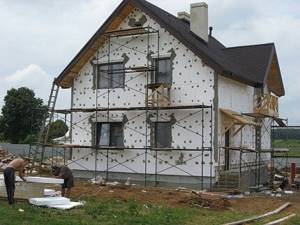
Any type of building can be reliably insulated without extra costs. The main thing is to choose the right materials for insulation and an experienced contractor
Resistance to insects and rodents . Often, small rodents and insects, such as mice or ants, can make nests under a layer of thermal insulation.
If there is such a problem on the site, then it would be advisable to carry out insulation using bulk materials. Expanded clay is good because it does not attract animals.
It is also necessary to take into account other factors, such as the price of insulation, features of its installation, wall material, impact on the environment, fire resistance, etc.
If you plan to install a thermal insulation system from the inside of the house, it is worth reading the following article, which details the materials and methods of their use.
Tips for installing insulation
- If you plan to install vinyl siding, you should use galvanized screws and nails. This will protect the metal from rust and the structure will last longer.
- When choosing mineral wool, you should ask whether it is treated with a fire-retardant mixture.
- The joints of the insulator blocks must be sealed to avoid moisture ingress.
- If you plan to use mineral wool, it is better to install blocks on a vertical surface. They have a denser structure and therefore have better insulating qualities.
- Membranes are laid on polystyrene foam and mineral wool. If you do not do this, condensation will begin to accumulate in the house. An additional ventilation gap is created by the sheathing.
- Areas around windows and doorways require additional insulation. The insulator is also reinforced at the corners of the building.
When insulating walls, you need to pay special attention to windows. Source myprofnastil.ru
- To install the heat insulator, no leveling of the walls is required.
- The calculated amount of material should be increased by 5 - 7%, since some will have to be cut off during installation.
- To fix the insulator, dowels with disc-shaped caps are used. At least 5 dowels are used for each block.
Conclusions and useful video on the topic
To avoid common mistakes when choosing materials for insulation, we recommend watching the following videos:
With all the variety of available materials and insulation methods, you can always choose the most suitable one. Despite the fact that some work seems easy to perform, it is still better to entrust it to experienced builders and heating engineers.
Would you like to talk about how you selected insulation for furnishing your own country house? Do you have information that will be useful to site visitors? Please write comments, ask questions on controversial or interesting points, post photos in the block below.

